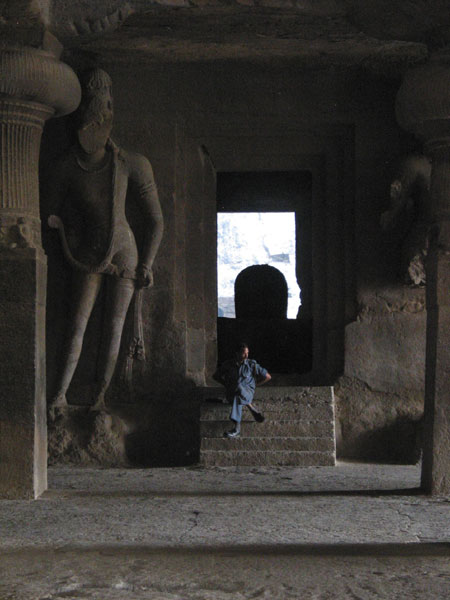Inside the stunning caves of Elephanta
 |
|
Elephanta Caves is a UNESCO World Heritage site in Mumbai.[Photo provided to China Daily] |
A cool breeze from the Arabian Sea caressed my face as I waited under a blue sky for the "steamers", as large boats are popularly called in India, to arrive on the shore. I was at the magnificent Gateway of India, a British-era monument that faces the sea in India's financial hub Mumbai.
The boat would take me to the Elephanta Caves, a UNESCO World Heritage site, located on an island on India's western waters, about 10 kilometers from Mumbai. The boats there ferry passengers between 9 am and 2 pm daily.
 |
As I set sail, the view of the surrounding lush green hills, the Gateway and the Taj Mahal Hotel, another Mumbai landmark, looked gorgeous in the background.
It took me nearly an hour to reach the island, where there are no elephants in case you expect to see one. Portuguese invaders named the caves Elephanta because when they arrived on the island (originally called Gharapuri) hundreds of years ago, they saw a huge statue of an elephant at the entrance of the caves.
A long flight of stairs to the entrance of the caves greeted me. Although the stairs aren't steep, the climb took some time. Huge sheets of polythene covered the entire staircase like a canopy to protect visitors from harsh sunlight and the rain. Numerous small shops sell snacks and souvenirs.
I met a few monkeys on my way up. They are commonly sighted there.
Chairs with bamboo poles horizontally attached on both sides, resembling palanquins of the past, are also available for disabled people to be carried in.
At the caves' entrance is a small museum that was set up by the Archaeological Survey of India, which is a government agency tasked with restoration and maintenance of India's heritage sites. The museum offers an introductory lesson on rock carvings in the caves.
The enormous cave complex is adorned by big and intricate rock sculptures, most of which are now in ruins. The caves are dedicated to Shiva, the supreme god in the Shaivite sect of Hinduism.















